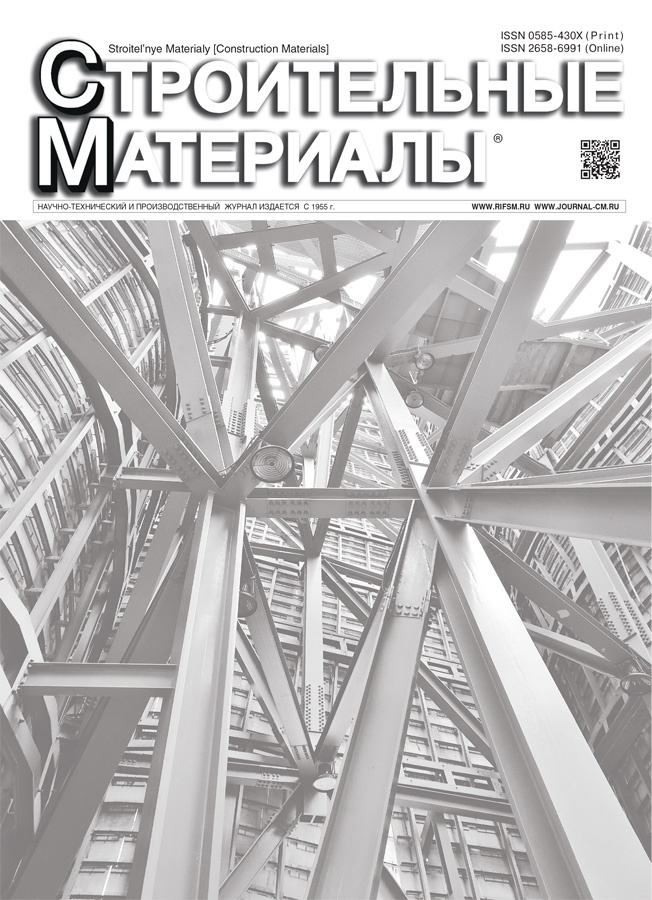Processes of cement stone structure formation in presence of additives made of TPP waste of various compositions analysis
- Authors: Markova I.Y.1, Strokova V.V.1, Stepanenko M.A.1, Sivalneva M.N.1
-
Affiliations:
- Belgorod State Technological University named after V.G. Shukhov
- Issue: No 9 (2025)
- Pages: 68-78
- Section: Статьи
- URL: https://archivog.com/0585-430X/article/view/693113
- DOI: https://doi.org/10.31659/0585-430X-2025-839-9-68-78
- ID: 693113
Cite item
Abstract
Althouhg the usage of combination of cement and various types of man-made raw materials from fuel and energy plants waste has long history, the study of the nature and mechanisms of fly ash and binder interaction is still relevant. This is due to the constantly changing variability of the fly ash properties because of fluctuations in the technological factors of its formation. The present work is about the study of the heat release kinetics during cement hydration in presence of additives from a wide sample of man-made raw materials (three acidic and two alkaline fly ash), as well as the study of structure formation processes during various periods of hardening with use of scanning electron microscopy. This made it possible to differentiate the reactions which leads to the main phases composing the cement stone are formed in dependence of the fly ash particles composition and structure. As a result, theoretical and experimental data on the nature of the interaction of the fly ash various types with cement have been supplemented, reflecting key factors (the content of oxides of CaO, SiO2, Al2O3, Fe2O3) that contribute to active structure formation, and secondary factors that leveling the process of gaining the binder brand strength (particles content other than spherical shape; the presence of carbonaceous impurities).
Full Text
About the authors
I. Y. Markova
Belgorod State Technological University named after V.G. Shukhov
Author for correspondence.
Email: irishka-31.90@mail.ru
Candidate of Sciences (Engineering)
Russian Federation, 46, Kostyukova Street, Belgorod, 308012V. V. Strokova
Belgorod State Technological University named after V.G. Shukhov
Email: vvstrokova@gmail.com
Doctor of Sciences (Engineering)
Russian Federation, 46, Kostyukova Street, Belgorod, 308012M. A. Stepanenko
Belgorod State Technological University named after V.G. Shukhov
Email: stepanencko.rita2017@yandex.ru
Senior lecturer
Russian Federation, 46, Kostyukova Street, Belgorod, 308012M. N. Sivalneva
Belgorod State Technological University named after V.G. Shukhov
Email: 549041@mail.ru
Candidate of Sciences (Engineering)
Russian Federation, 46, Kostyukova Street, Belgorod, 308012References
- Fedyuk R.S., Mochalov A.V., Bituev A.V., Zayahanov M.E. Features of structure formation of composite materials based on cement, limestone and acid ash. Neorganicheskiye Materialy. 2019. Vol. 55. No. 10, pp. 1141–1148. (In Russian). EDN: SAHZBV. https://doi.org/10.1134/S0002337X1910004X
- Ley-Hernandez A.M., Lapeyre J., Cook R., Kumar A., Feys D. Elucidating the effect of water-to-cement ratio on the hydration mechanisms of cement. ACS Omega. 2018. Vol. 3. No. 5, pp. 5092–5105. https://doi.org/10.1021/acsomega.8b00097
- Gorlenko N.P., Sarkisov Yu.S., Volkov V.A., Kulchenko A.K. Structure formation processes in the cement-water system with the introduction of the chemical additive glyoxal. Izvestiya of higher educational institutions. Physics. 2014. Vol. 57. No. 2, pp. 127–132. (In Russian). EDN: RYZFKN
- Krivoborodov Yu.R., Thet Naing M. Theoretical background for the creation of composite building materials based on special cements. Tekhnika i Tekhnologiya Silikatov. 2022. Vol. 29. No. 2, pp. 179–188. (In Russian). EDN: LENZTN
- Tang V.L., Ngo S.Kh., Bulgakov B.I., Aleksandrova O.V., Larsen O.A., Orekhova A.Yu., Tyurina A.A. Use of ash and slag waste as an additional cementing material. Vestnik of the Belgorod State Technological University named after V.G. Shukhov. 2018. No. 8, pp. 19–27. (In Russian). EDN: UZCMXW. https://doi.org/10.12737/article_5b6d58455b5832.12667511
- Kopanitsa N.O., Demyanenko O.V., Kulikova A.A. Complex additives based on secondary resources for modification of cement compositions. Vestnik of the Tomsk Polytechnic University. Engineering of georesources. 2023. Vol. 334. No. 1, pp. 136–144. (In Russian). EDN: WLUVTE. https://doi.org/10.18799/24131830/2023/1/4045
- Lam N.Z.T., Samchenko S.V. Complex modifier based on aluminate cement and pozzolanic additive. Vestnik of MGSU. 2023. Vol. 18. No. 5, pp. 709–716. (In Russian). EDN: JUPMDN. https://doi.org/10.22227/1997-0935.2023.5.709-716
- Salamanova M.Sh., Murtazaev S.A.Yu., Nakhaev M.R. Possible alternative solutions to problems in the cement industry. Stroitel’nye Materialy [Construction Materials]. 2020. No. 1–2, pp. 73–77. (In Russian). EDN: MWMPHT. https://doi.org/10.31659/0585-430X-2020-778-1-2-73-77
- Aleksandrov A.O. On the use of thermally activated fly ash to replace cement in construction. Cement i ego Primenenie. 2017. No. 3, pp. 88–91. (In Russian). EDN: ZHBNIF
- Nazirov R.A., Zhzhonykh A.M., Samoilo A.S., Novikov N.S. Hydraulic activity of high-calcium fly ash with additives of man-made origin. Izvestiya of Higher Educational Institutions. Construction. 2025. No. 3 (795), pp. 19–31. (In Russian). EDN: QJBNUU. https://doi.org/10.32683/0536-1052-2025-795-3-19-31
- Endzhievskaya I.G., Vasilovskaya N.G., Dubrovskaya O.G., Baranova G.P., Chudayeva A.A. Effect of mechanical activation on the stabilization of the properties of fly ash from Krasnoyarsk thermal power plants. Journal of the Siberian Federal University. Series: Engineering and Technology. 2018. Vol. 11. No. 7, pp. 842–855. (In Russian). EDN: SLQBHB. https://doi.org/10.17516/1999-494X-0099
- Belyakova E.A., Moskvin R.N., Tarakanov O.V. Fly ash based cement for modern construction technologies. Regional’naya Arkhitektura i Stroitel’stvo. 2017. No. 1 (30), pp. 5–11. EDN: YKPIDT
- Pukharenko Yu.V., Ryzhov D.I., Staroverov V.D. Features of structure formation of cement composites in the presence of fulleroid carbon nanoparticles. Vestnik MGSU. 2017. Vol. 12. No. 7 (106), pp. 718–723. (In Russian). EDN: ZATDHP. https://doi.org/10.22227/1997-0935.2017.7.718-723
- Yakovlev G.I., Grakhov V.P., Gordina A.F., Shaibadullina A.V., Saidova Z.S., Nikitina S.V., Begunova E.V., Elrefai A.E.M.M. Effect of dispersions of technical carbon on properties of fine concrete. Stroitel’nye Materialy [Construction Materials]. 2018. No. 8, pp. 89–92. (In Russian). EDN: XZJAHB. https://doi.org/10.31659/0585-430X-2018-762-8-89-92
- Gao F., Tian W., Wang Z., Wang. F. Effect of diameter of multi-walled carbon nanotubes on mechanical properties and microstructure of the cement-based materials. Construction and Building Materials. 2020. Vol. 260. 120452. EDN: ELVKKV. https://doi.org/10.1016/j.conbuildmat.2020.120452
- Tarakanov O.V., Kalashnikov V.I. Prospects for the use of complex additives in new-generation concretes. Vestnik of the Kazan State University of Architecture and Civil Engineering. 2017. No. 1 (39), pp. 223–229. (In Russian). EDN: YIOAYT
Supplementary files















